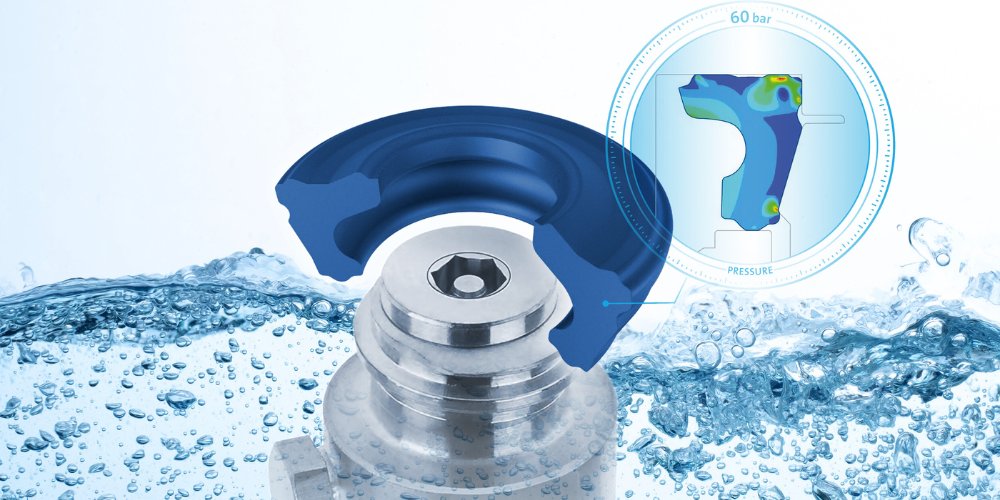Freudenberg Sealing Technology has developed and patented a high-performance polyurethane seal for customers with specific requirements.
Drinking water in many countries around the world is highly polluted: Contaminants such as microplastics, bacteria, viruses and pesticides can negatively affect water quality. Freudenberg Sealing Technologies has developed a sealing solution for a water treatment plant that not only filters tap water but also adds minerals, trace elements and, if required, carbonation to the tap water.
When initially developing the device, the customer was faced with a technical challenge: the valves of conventional CO2 cylinders are not fully standardized and come in many different sizes with varying connection heights.
Ulrich Wüstenhagen, Pneumatics Product Development, Freudenberg Sealing Technology Group: “After the customer contacted us, we began to analyze the special conditions that this seal had to meet. We quickly found that this project required our material expertise, development technology and experience in making such products.”

Sealing performance
The valve of the carbon dioxide filter element is screwed into the water purifier with a standard trapezoidal thread. Then connect the filter element and device firmly together. A pressure reducer on the unit then reduces the filter element pressure from 60 bar to approximately 3 bar normal operating pressure. Now, the seal between the pressure reducer on the device and the cylinder valve has to do something special: due to the long-term exposure of the material to a pressure of 60 bar, carbon dioxide penetrates the material until it reaches its saturation point. When using a water purifier, the pressure drops rapidly and the gas expands suddenly. During this rapid depressurization, gases in the material escape from the material. This problem does not arise if the seal is made of the correct material. However, if the material is faulty, carbon dioxide can build up in it, or if the material is completely unsuitable, the expansion of the gas can create bubbles that can damage the seal.
In addition to the right material, seals must have the right geometry to handle these demanding conditions. It must both compensate for the various connection sizes of the valves on the gas cylinder and allow the user to change the gas cylinder more conveniently. Here, a clever combination of materials and geometry ensures the lowest possible frictional torque when screwing in or out of the air core.
Materials and Design
The company said customers were working tight schedules and did not have much time for extensive testing. Relying on existing materials and manufacturing know-how, Freudenberg Sealing Technologies started working closely with the appliance manufacturer to finally determine the optimum sealing solution and the perfect material. The high-performance polyurethane (93 AU V167) produced by the company has good elasticity and tensile strength, and the elongation at break is also high. It is very elastic, wear-resistant and approved for food contact according to EU Regulation No. 10/2011. It also meets FDA requirements and 3-A Sanitary Standards.
The company’s rapid sealing service, Freudenberg Xpress, supplied the first CNC-machined prototypes and subsequently took over production of two initial series of approximately 1,000 CNC-machined seals each. The next step required the specialists from Freudenberg Sealing Technology to provide their know-how for production as well as injection-molded samples from the mold that is now being used to supply series parts – economically and ready to use.
Ulrich Wüstenhagen concludes: “Thanks to a very pragmatic approach, we reached a tailor-made solution with the customer in a very short time – which we have now patented. This seal ensures From now on, tap water can be enjoyed anywhere in the world with confidence.”



 微信扫一扫打赏
微信扫一扫打赏
